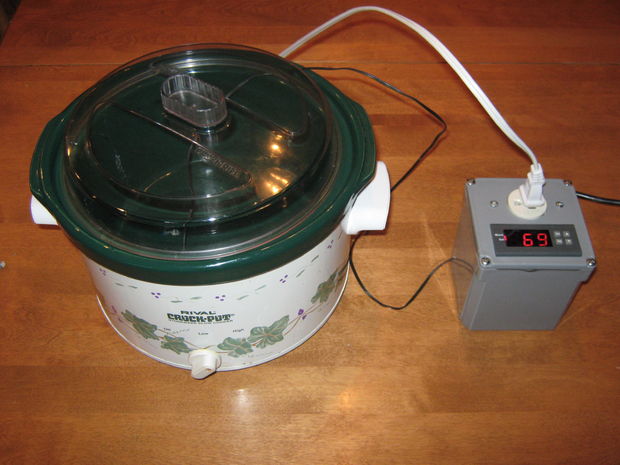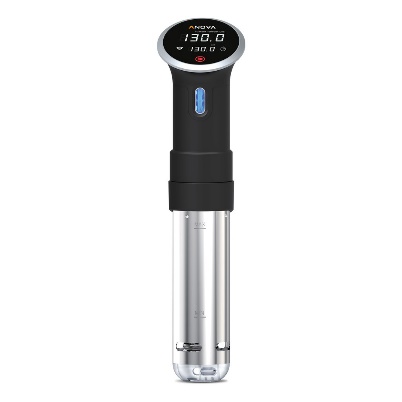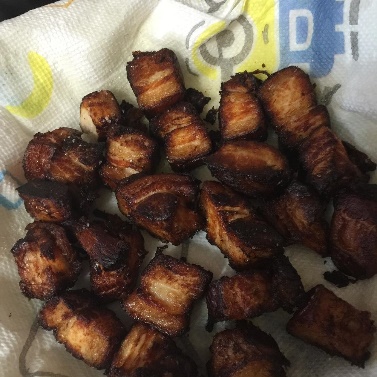DIY to Cooking Sous Vide
For all you Foodies out there if you like kitchen toys like I do and want to try something new. Recently, a new culinary trend has been gaining steam in the home kitchen. Sous vide, which has been used in restaurants and commercial kitchens since the 1970s, has started to see significant growth in the home kitchen market. With the development of sous vide kitchen appliances specifically designed for the home cook, this new way to cook is really growing in popularity.
Did you know you may have a DIY Sous vide machine in your house right now?

A quick search online will reveal many different do-it-yourself methods for building a home sous vide machine. Some designs use rice cookers or slow cookers as the water bath and to heat the water. In these cases, an external thermostat is built in or attached to the cooker to monitor and regulate the temperature. Since sous vide cooking requires precise temperature control, a digital PID (proportional-integral-derivative) systems from $26 to $39 controller is used to tell the rice cooker or slow cooker when to heat and when to stop.
These do-it-yourself machines do raise questions and concerns about their reliability at controlling precise temperature over a long period of time. While these may be fun “hobby” machines, purchasing one of the professionally built machines on the market is a much safer way to cook. Purchasing a sous vide machine can seem expensive (from $199 to $1,275) if you’ve never cooked using this culinary technique, so this Slow Cooker and PID method allows you to experiment with it, taste the results, and decide whether you want to buy a machine. In recent years, companies like PolyScience, Nomiku, Anova, and Sansaire and SousVide Supreme have made sous vide cooking appliances specifically targeted for home kitchens.
But the machine I have and love is the Anova Precision Cooker WiFi makes it more convenient than ever to cook perfect, restaurant quality results whenever and wherever. For just $199:

At first glance, many people look at sous vide and think that it is essentially just a new term for “boil in a bag” cooking. Most commonly seen with rice, “boil in the bag” cooking has found a niche with some people, and you can easily find a box of Uncle Ben’s Boil-in-Bag Rice on most major supermarket shelves. In fact, campers have long used freezer bags and vacuum sealer bags to quickly and easily reheat meals while out in the wilderness. It is quite convenient. Is sous vide cooking the same as this? There are some similarities between these two techniques; for example, they both vacuum seal food in a bag and cook it in hot water, but that is where the similarities end.
Did you know you have a vacuum sealer in your house?
Zip-Top Bags
It is actually possible to use sturdy food-safe zipper bags. These bags do not work with vacuum sealers, therefore, the air is removed manually. Food is placed in the bag and the air is drawn out of the bag using the air displacement method, a process based on Archimedes’ principle. To use this technique, simply place the food in the bag and do not close or zip the seal. Slowly lower the bag into the water. As the bag enters the water, it will push the air out of the bag. Water will press up against the food in the bag, creating a vacuum environment. Lower the bag so that the zipper seal is just above the water. Now press the seal to close the bag and you have a manually made vacuum-sealed bag
The types vacuum-sealing methods and machines available chamber, handheld and Suction, the suction type is by far the most common type used in home kitchens. The one that like and have used for years is the Food Saver. While suction-type vacuum sealers struggle with lots of liquid, there are ways to work around this issue. Freeze the marinade in an ice-cube tray. Dump the frozen marinade cubes into the bag with the meat. The vacuum sealer will work great at drawing out all the air and sealing the bag. Add an extra 30-60 minutes to the cook time for the marinade to thaw.
Here is a list of things to do to get ready:
Wash hands and make sure that you are using sanitary tools and environment.
Rinse vegetables and anything else necessary to ensure things are clean.
Get out the food-safe bags. This puts them within reach and also makes sure that you have enough.
Get out all the ingredients to make sure that you have enough of everything and to ensure that all the ingredients are within reach. There is nothing more frustrating than being unable to find an ingredient in the pantry or fridge while you are in the middle of cooking.
Trim the meat of any extra fat, membrane, and tissue. If desired or necessary, cut the meat into chunks or serving portions (this can be particularly helpful for large cuts of meat or whole salmon fillets).
If vegetables are used in the recipe, peel, chop, or slice them so that they are ready to go.
Measure out and mix up any marinades or spice blends for seasoning the meat or other vegetables.
The Basic Steps for Sous Vide:
Season -- One of the most important steps in cooking is properly seasoning the food. Poorly seasoned meat or vegetables can result in food that is both bland and completely unforgivable.
Essential -- In some cases, meat is seared prior to being placed in the food-safe bag and vacuum sealed.
Marinades -- Can be an excellent way to season the meat. Adding a little bit of honey garlic sauce, homemade marinade, or even a few squirts of barbecue sauce with the meat can provide enhanced flavor.
Bagging -- It may be impossible to remove all the air with certain foods. Pre-Heating -- Once the water bath has finished preheating and comes to the set temperature, it is time to drop the bags into the water.
Cooking Time -- Sous vide is all about precision, and the temperature of the water can have an enormous impact on the food, depending on what is being cooked. For example, +/-i°F can really change the texture of a soft-boiled egg and the creaminess of the yolk.
Finishing -- Searing the meat will create a great reaction that will give it the classic browned appearance of grilled or seared meat.
24-Hour Sous Vide Pork

 Dave Smith
Dave Smith
Monthly Newsletter Contributor since 2016
